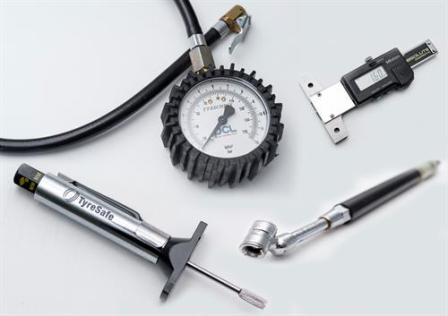[dropcap]D[/dropcap]rivers are increasing their motoring costs as well as the risk of being involved in an incident by ignoring tyre maintenance, according to TyreSafe.
 The organizer of Tyre Safety Month is reminding motorists that regular tyre checks are a ‘win-win’ as they will help road users stay safe and avoid unnecessary bills. To help them, TyreSafe has drawn together a list of tips as a reference guide.
The organizer of Tyre Safety Month is reminding motorists that regular tyre checks are a ‘win-win’ as they will help road users stay safe and avoid unnecessary bills. To help them, TyreSafe has drawn together a list of tips as a reference guide.
Insurance
An insurer may not be obliged to pay the owner’s costs if an incident they are involved in is proven to have been caused by defective tyres on their vehicle. In such instances where poor tyre maintenance is proven, the insurer may only be required to pay the third party costs and not those incurred by the person deemed to be responsible. To be certain, always check tyres are in good roadworthy condition.
Underinflated tyres
Tyres driven below the vehicle manufacturer’s recommended setting increase the amount of fuel used. Tyres will also wear more quickly, meaning owners may only benefit from 90% of a tyre’s potential life and will need to change them more regularly. To avoid this, find the right setting, which can be found in the handbook, door sill or filler cap, and use an accurate gauge to check the pressure is correct before setting off.
Tread depth
Driving with tyres which have tread below the legal minimum limit of 1.6mm leaves drivers vulnerable to a potential £2500 fine for each tyre found to be illegal. It is almost impossible to predict how quickly a tyre’s tread will wear so the only way to be sure is regularly checking it. Ideally a tread depth gauge should be used but a 20-pence piece may be used as a guide. When inserted into the tread, if the border of the 20-pence piece is clearly visible, it may be illegal and should be checked by a professional using an accurate gauge.
Don’t leave it to the MoT
Defective tyres are the second most common cause of cars’ MoT failures in Britain and tyre pressure monitoring systems (TPMS) are also part of the test. If a car is failed for defects with either, it cannot legally be driven away from the test station, leaving the owner with fewer options to shop around for the best price to have them fixed or replaced. Regular checks every month will highlight these defects in advance of the MoT.
Buying used tyres
While the biggest concern with buying used, or part worn, tyres is uncertainty of their safety, they also cost more in the long term. Part worns can legally be sold with a minimum tread depth of 2mm, leaving just 0.4mm before reaching the legal limit but even those sold with deeper tread will not have the same amount of life left as with a new tyre. TyreSafe research has shown it can cost over £1 more per mm of tread for a part worn than a new tyres.
Time cost
Breakdown recovery services attend hundreds of thousands of callouts for drivers suffering tyre-related issues on Britain’s roads every year. This not only leaves vehicles and occupants stranded in vulnerable situations next to busy roads, it also costs huge amounts of time for those travelling and other road users caught in the aftermath. A substantial proportion of these incidents could be avoided by regular tyre checks.
Stuart Jackson, chairman, TyreSafe, said: “Safety on the roads is always of paramount importance but drivers should also be aware that ignoring tyre safety is a false economy. In any other instance, if someone was asked to do something which not only makes them safer but also saves them money, they’d consider it a ‘no-brainer’ – so why not with their tyres? Tyre checks are a win-win, and TyreSafe encourages motorists to make this maintenance routine, at least once a month every month.”




